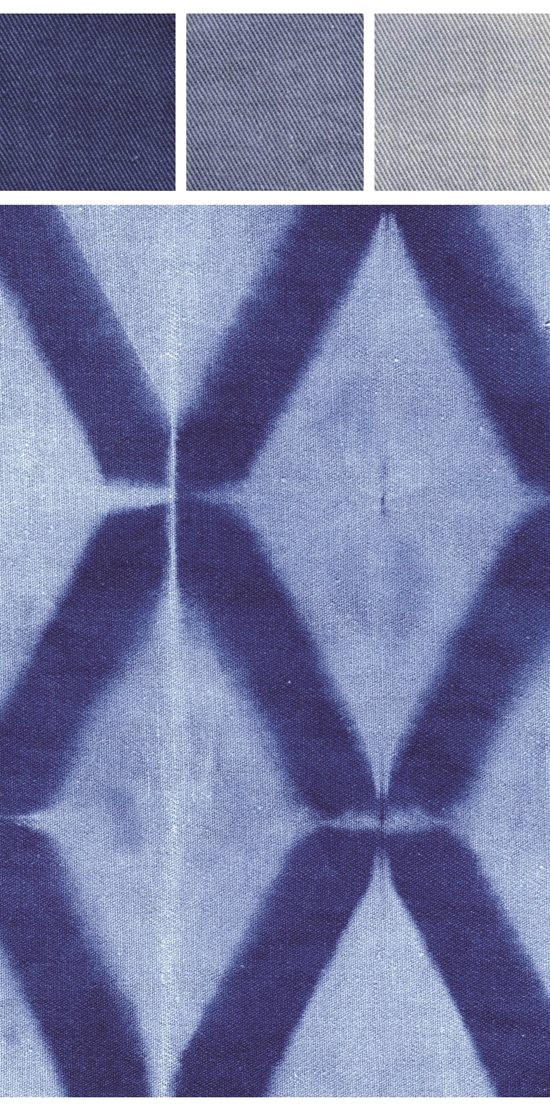Laccase catalysed decolouration to achieve decorative surface patterning
*Laccases are important enzymes for their application on textile processing due to their broad substrate spectrum and great versatility. Laccase is capable of catalysing the polymerisation of simple aromatic compounds to create colour compounds (dyes) useful for textile fibre coloration.
However, laccase can also effectively break down conventional textile dye molecules facilitating the removal of colour from dyed textile fibres resulting in a bleached or faded effect. These two approaches indicate design potential.
Laccase*-catalysed decolourisation explores the creative application of laccase-mediator systems to achieve decorative textile surface patterning on cotton fabrics. This could be used as an alternative to commercial denim garment finishing, which is usually based on harsh oxidant chemicals for a slightly worn look. To achieve various levels of fading, indigo surface-dyed cotton can be enzymatically processed with laccase either using controlled wet treatments or in combination with conventional textile printing pastes.
This non-abrasive approach oxidises (removes) surface dye from coloured yarns revealing lighter coloured underlying fibres. Techniques developed offer new routes and possibilities for cotton finishing using mild enzyme processing without the use of harsh chemicals.
